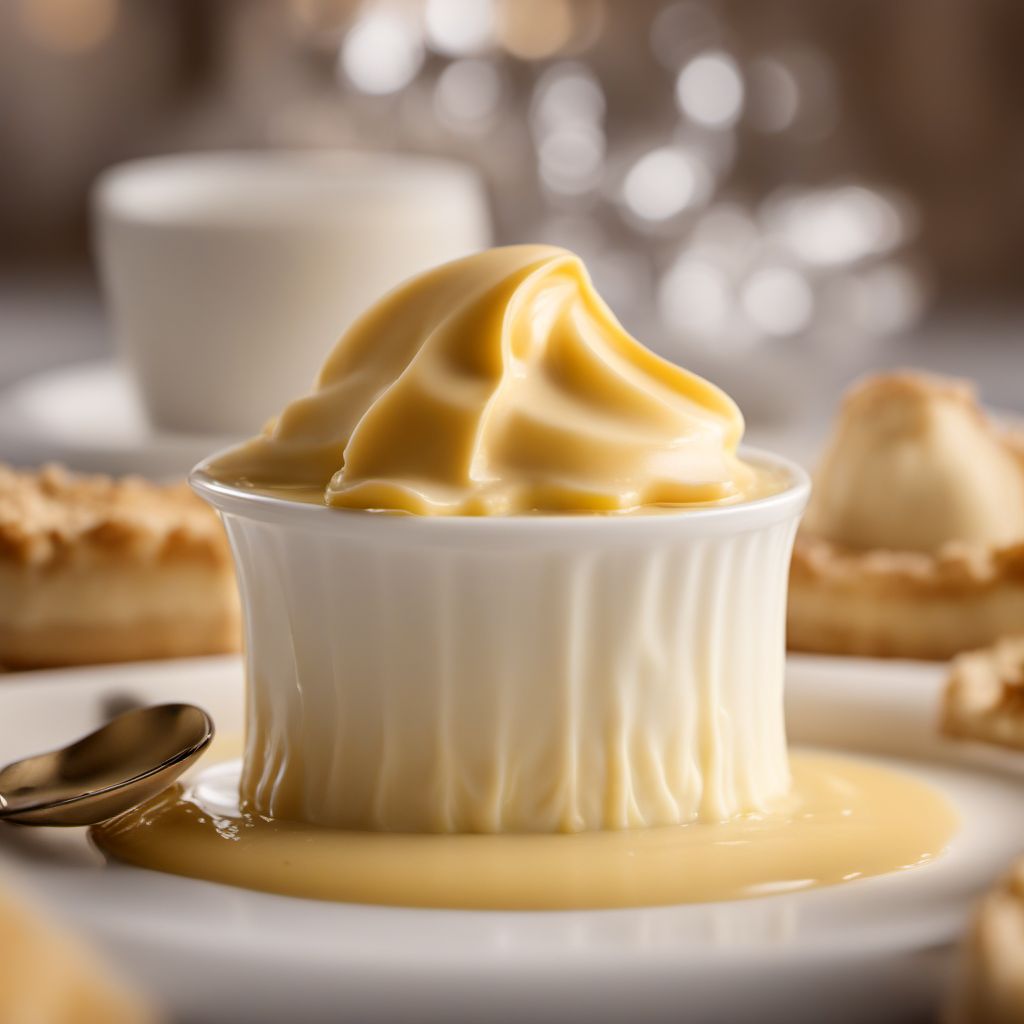
Ingredient
Custard
"Velvety Delight: Exploring the World of Custard"
Custard is a smooth and creamy mixture made by combining milk or cream with eggs, sugar, and flavorings. It has a velvety texture and a rich, luxurious taste that is both comforting and satisfying. Custard can vary in thickness, ranging from pourable to thick enough to be sliced. Its appearance is typically a pale yellow color, although it can be tinted with various ingredients such as vanilla, chocolate, or fruit purees.
Origins and history
Custard has a long history dating back to ancient Rome, where it was known as "custos," meaning "guardian" or "protector." It was initially used as a filling for pies and tarts. Over time, custard gained popularity in European cuisine, particularly in England and France. Today, custard is enjoyed worldwide and is a staple in many traditional desserts, such as crème brûlée, flan, and trifle.
Nutritional information
Custard is a good source of protein, calcium, and vitamins A and D. It is relatively high in calories, with an average serving containing around 150-200 calories.
Allergens
Custard may contain allergens such as eggs and dairy, making it unsuitable for individuals with allergies to these ingredients.
How to select
When selecting custard from a store, look for brands that use high-quality ingredients and have a smooth, creamy consistency. Avoid custards with artificial additives or excessive sweetness. If purchasing from a bakery or dessert shop, ask about the freshness and ingredients used in their custard.
Storage recommendations
Custard should be stored in an airtight container in the refrigerator. It is best consumed within 2-3 days to maintain its freshness and quality.
How to produce
Amateur cooks can make custard by whisking together eggs, sugar, and milk or cream in a saucepan over low heat until thickened. It is important to continuously stir the mixture to prevent it from curdling. Flavorings such as vanilla extract or grated nutmeg can be added for extra taste.
Preparation tips
To prepare custard, heat milk or cream in a saucepan until it reaches a simmer. In a separate bowl, whisk together eggs, sugar, and any desired flavorings. Slowly pour the hot milk or cream into the egg mixture while whisking continuously. Return the mixture to the saucepan and cook over low heat, stirring constantly, until it thickens to a custard consistency. Avoid overheating or boiling the custard, as it can curdle. For a smooth texture, strain the custard through a fine-mesh sieve before using.
Culinary uses
Custard is a versatile ingredient used in a variety of desserts, including pies, tarts, puddings, and pastries. It can also be used as a filling for cakes or as a base for ice cream. Additionally, custard can be enjoyed on its own, served warm or chilled, with a sprinkle of cinnamon or a dollop of whipped cream.
Availability
Custard is commonly available in grocery stores, supermarkets, and bakeries worldwide.
